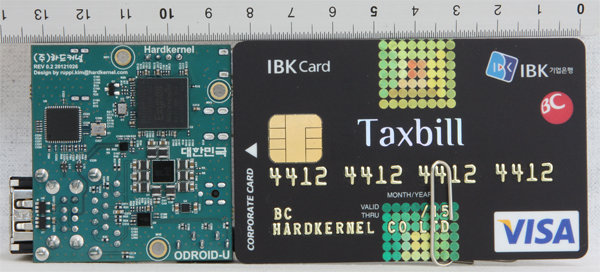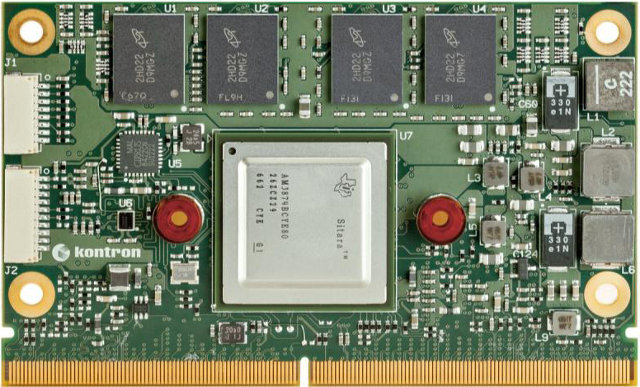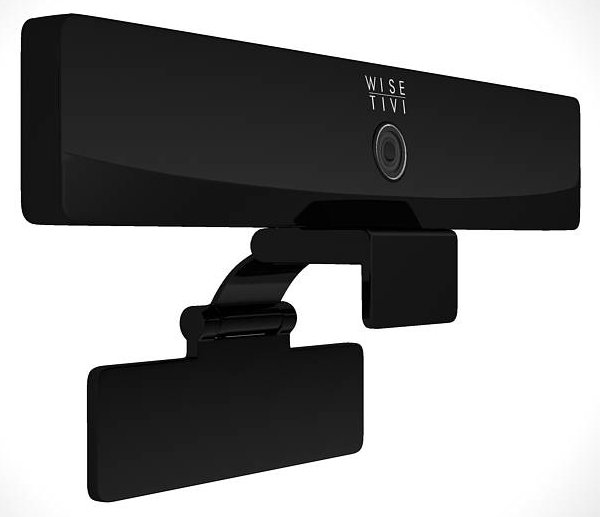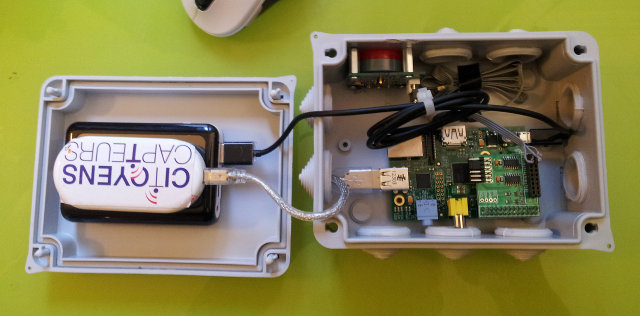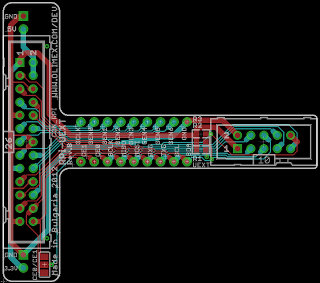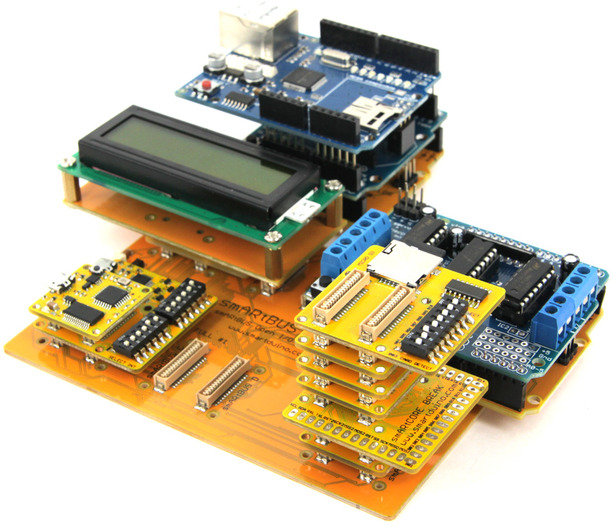Hardkernel has just announced 2 tiny quad core development boards based on Exynos 4412 @ 1.4 GHz (as used in Samsung Galaxy S3) and Exynos 4412 Prime @ 1.7 GHz (as used in Samsung Galaxy Note 2) called respectively ODROID-U and ODROID-U2. The other difference is the U version comes with 1 GB RAM, and the U2 version with 2 GB RAM. Here are the specification the ODROID-U and ODROID-U2 boards: Processor – Samsung Exynos4412 @ 1.4 GHz (ODROID-U) or Exynos 4412 Prime @ 1.7 Ghz (ODROID-U2), which can be overclocked respectively to 1.8 GHz and 2 GHz. GPU – Mali-400 clocked at 400MHz (ODROID-U) or 440MHz (ODROID-U2), which can be overclocked respectively to 533 and 633 MHz. System Memory – 1GB LPDDR2 DRAM @ 800MHz (ODROID-U) or 2GB @ 880MHz (ODROID-U2) Storage – microSD socket, eMMC connector USB – 2x USB 2.0 Host ports, 1x USB 2.0 device for ADB/mass […]
Kontron Unveils ULP-COM-sA3874i Module Powered by TI Sitara AM3874
Kontron introduced ULP-COM-sA3874i, another family of computer-on-module based on ULP-COM standards, based on Texas Instruments Sitara AM3874 Cortex A8 processors that aims to drive down system costs for ultra-low power SFF (small form factor) solutions in military, industrial automation/HMI, digital signage and medical markets. Here are the technical specifications of this module family: CPU – Texas Instruments Sitara AM3874 Cortex A8 @ 800 MHz Main Memory – On-board 1 or 2 GB DDR3 depending on model. Flash – Onboard Up to 32GB NAND FLASH build option Graphics – Single Channel 18bit,24bit (18bit compatible) LVDS, and HDMI with dual independent displays support. Ethernet – 10/100/1000 MBit Ethernet USB – 2x USB 2.0, USB OTG SATA – 1x SATA Interface Interfaces – GPIO, I²C, 4x I²S, 2x CAN, 2x SPI, 4x UART Camera input – 10bit parallel interface PCI Express / PCI support – 1x PCI Express x1 Lanes Power Supply – […]
SoC Power Measurement with ARM Energy Probes and Linux EAP Tools
Andy Green, TI Landing Team lead at Linaro, gave an interesting presentation entitled “How to measure SoC power” at Linaro Connect Europe 2012. This talk was specifically aimed at software engineers, so that they know how to properly measure power consumption, and take actions to optimize the software to decrease it. In the first part of the presentation, he gives an overview of electronics basics with definition of voltage, load, current and power, units used for power measurements (Clue: you need to use Watts), and how voltage, current and power can be measured with voltmeters and ammeters. When you want to measure power in a rail, you would usually insert a shun resistor, use a multimeter and derive the power from the resistance and the measured voltage (P=V2/R). He also gives details about regulator efficiency, choosing measurement sampling… There are 4 common measurements strategies: DC IN – Easiest way, gives the complete […]
Wise Tivi Announces Three Android 4.2 Media Players based on Rockchip RK3066 Starting at $59.99
Wise Tivi is a new company that recently launched 3 Android 4.2 (Jelly Bean) products based on what appears to be Rockchip RK3066 processor: Wise Tivi Camera ($89.99) – A set-top box with a front camera that can be conveniently placed on top of the TV. Wise Tivi Portable ($79.99) – The mini PC / PC-on-an-HDMI-stick version. Wise Tivi Box ($59.99) – A standard Android set-top box with IR remote control. According to the company website, all 3 devices share the following specifications: SoC – Dual Core ARM Cortex A9 1.6Ghz with Quad-core ARM Mali-400 MP (Rockchip RK3066) System Memory – 1GB DDR3 RAM Storage – 4 GB Nand Flash (up to 16GB) and microSD card slot Connectivity – WiFi 802.11 b/g/n Video Output – HDMI 1.3 (up to 1920×1080 resolution), USB – 1 x micro USB OTG, 1x SB 2.0 HOST and 1x micro USB for power. Video – […]
Le Labo Citoyen Gasser – Raspberry Pi Based High Precision Pollution Monitoring System
“Le Labo Citoyen” is a recently founded French non-profit organization aimed at “promoting and experimenting with innovating and free technologies for the citizens and the environment”. Their first project is to gather pollution data (NO2, O3, and SO2 levels) in Paris using 2 (soon to be) open source components: Gasser – Self-contained mobile sensor currently powered by the Raspberry Pi ThingStream – Open source IoT datastore which should be similar to iDigi Cloud, except you can just store data in your own server or on “Le Labo Citoyen” servers. Gasser has four main parts: Sensor(s) – Alphasense B4-series sensors (black and red component in the top left of the main box) with accuracy of up to <10 ppb (parts-per-billion). Cost: ~110 Euros. They currently only use the NO2 (nitrogen dioxide) sensor. ADC & Computer – Raspberry Pi (Cost: ~30 Euros) & Delta-Sigma ADC (Cost: ~30 Euros). Communication Medium – Huawei […]
International Black Friday Deals for Development Boards and Chinese Gadgets
Black Friday is the day following Thanks giving in the USA, and is considered the beginning of the Christmas shopping season. Although Black Friday is very much US centric, online shopping may also to access those deals anywhere in the world. 20% discount will be available on ISEE IGEPv2 NO WIFI board, as well as IGEP COMs & EXPANSIONS boards. This is the only development board I’ve found to have a deal for black Friday. Focalprice has a page dedicated to Black Friday with discounts between 11 to 21% for smartphones, tablets, and all sorts of accessories, including the AMPE 10 tablet that will sell for $180.90. There’s also a 6% discount coupon (12TKS6OFF) valid between the 22nd and 25th. Pandawill has sales with up 10% discount between the 22nd and 25th of November. Dealextreme does not have deals, but instead a Black Friday lottery. If you order for over […]
Olimex to Provide $5 Raspberry Pi GPIO to Breadboard & UEXT Adapter
At $25 and $35 is Raspberry Pi is currently the cheapest board you can buy to develop for ARM Linux, however the expansion boards such as the Gertboard ($60) and the recent PiFace Digital ($32) are not as cheap considering the few components they have on board. This is why Olimex has designed a Raspberry Pi GPIO to breadboard & UEXT adapter (RPI-UEXT) which should be available in 2 weeks for 3.95 Euros (~$5). You then just need to add a breadboard for 2.95 Euros (~$3.8 ), which means for just $9 you can start prototyping easily with the Raspberry Pi. The RPI-UEXT adapter (PCB Layout pictures on the right) also features – as the name implies – a UEXT (Universal EXTension) connector which consists of 10 pins which provide power (+3.3V/GND), and access to asynchronous serial I/O, I2C & SPI signals. This connector allows to connect other UEXT modules […]
smARtDUINO Open System Provides a Low Cost Modular Arduino Platform
smARtDUINO is a new platform design by the former ARDUINO’s manufacturer (Update: This claim appears to be incorrect and a lie) composed of several compact modules and is a fully funded project on Kickstarter (Less than 3 days remain to become a sponsor). The platform is not based on a single processor, architecture or language but, makes use of an universal platform that can be used to connect components originally developed from different companies, technologies and form factors. For example, it is possible to integrate modules, accessories or shields from Arduino, Netduino, ChipKit and even interact with smartphone using an ADK module, without having to use a breadboard and/or soldering. Interoperability is made possible thanks to what they call “smARtBUS Open I/O“, which is a standard for connectors designed after looking at existing (Arduino) platforms on the market. The company opted for 2 solutions composed of 2 connectors: smARtBUS BASIC […]


